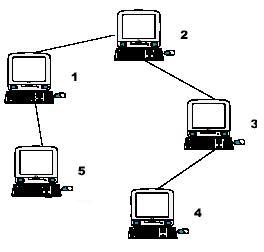经典的树形DP。。。
| Time Limit: 1000MS | Memory Limit: 32768KB | 64bit IO Format: %I64d & %I64u |
Description

Input
Output
Sample Input
5 1 1 2 1 3 1 1 1
Sample Output
3 2 3 4 4
Source
#include <iostream>
#include <cstdio>
#include <cstring>
#include <algorithm>
using namespace std;
const int maxn=22000;
const int INF=0x3f3f3f3f;
int Adj[maxn],Size;
struct E
{
int to,next,len;
}Edge[maxn];
void init()
{
Size=0;
memset(Adj,-1,sizeof(Adj));
}
void Add_Edge(int u,int v,int w)
{
Edge[Size].to=v;
Edge[Size].len=w;
Edge[Size].next=Adj[u];
Adj[u]=Size++;
}
int n,dp[maxn][3];
void dfs1(int f,int u)
{
int biggest=0,bigger=0;
for(int i=Adj[u];~i;i=Edge[i].next)
{
int v=Edge[i].to;
int w=Edge[i].len;
if(v==f) continue;
dfs1(u,v);
int temp=dp[v][0]+w;
if(temp>=biggest)
{
bigger=biggest;
biggest=temp;
}
else if(temp>bigger)
{
bigger=temp;
}
}
dp[u][0]=biggest;
dp[u][1]=bigger;
}
void dfs2(int f,int u)
{
for(int i=Adj[u];~i;i=Edge[i].next)
{
int v=Edge[i].to;
int w=Edge[i].len;
if(v==f) continue;
dp[v][2]=max(dp[u][2],(dp[v][0]+w==dp[u][0])?dp[u][1]:dp[u][0]) + w ;
dfs2(u,v);
}
}
int main()
{
while(scanf("%d",&n)!=EOF)
{
init();
for(int i=2;i<=n;i++)
{
int a,b;
scanf("%d%d",&a,&b);
Add_Edge(i,a,b);
Add_Edge(a,i,b);
}
memset(dp,0,sizeof(dp));
dfs1(-1,1);
dfs2(-1,1);
for(int i=1;i<=n;i++)
{
printf("%d\n",max(dp[i][0],dp[i][2]));
}
}
return 0;
}
原文:http://blog.csdn.net/u012797220/article/details/18940215